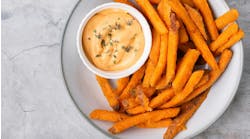The European Union erred when it banned titanium dioxide, a chemical often used as a food colorant, its judicial branch has ruled.
The Court of Justice of the European Union ruled in late November that the EU’s classification in 2019 of titanium dioxide as carcinogenic was based on faulty scientific analysis. It annulled that classification, along with any labeling requirements for products that contain titanium dioxide.
The EU now has to figure out how to respond in light of the court’s ruling. EU nations are generally not allowed to set food safety standards that affect international trade on an individual basis.
The concern with titanium dioxide centers on its tendency to break into nanoparticles that can accumulate in the lungs and elsewhere in the body. But the court ruled that the scientific study on which the EU based its ban was unreliable, and that the danger posed by titanium dioxide was “non-intrinsic,” since it is not designed to decompose into nanoparticles and does not invariably do so.
In the wake of the European court’s ruling, the Center for Science in the Public Interest announced Dec. 5 that it is advising consumers to avoid products with titanium dioxide.
“Unlike some other chemicals used in food, titanium dioxide has no nutritive, preservative, or food safety function—its use is purely cosmetic,” a CSPI spokesperson said in a statement. “The prospect of titanium dioxide nanoparticles damaging DNA is concerning enough for us to recommend consumers avoid foods that have it.”

